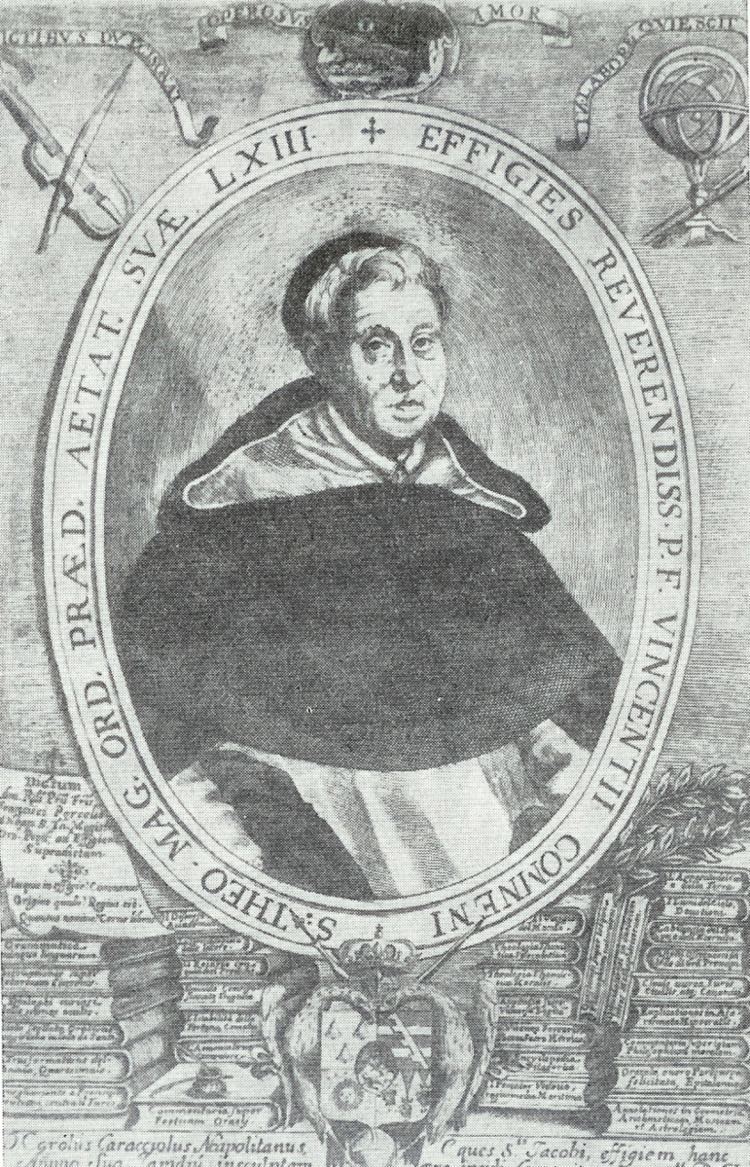Name Vincenzo Comneno | Died 1667 | |
 | ||
Vincenzo Comneno (Vicencius Comnenus or Vićenc Komnen) (1590–1667) was a musician and madrigal composer of the Renaissance and early Baroque from the Republic of Ragusa.
Contents
Biography
There is no relevant data on the life of Vincenzo Komnen. In his romanticised (auto)biography one can find three madrigals on the same text Vaghe Nimfe which represent the only preserved pieces of music of the nobility in Ragusa (Dubrovnik).
He falsely claimed to be a descendant of the Byzantine Komnenos dynasty, when he in fact came from the lowest class. His real name is unknown.
He was born in the small village of Slani in Istria under the family name Piranese. According to the abbot of Naples, Lorenzo Miniatti (Venice 1663), Comnen was born in Naples in 1590.
He was educated at the Roman Jesuit College as a magister of philosophy and theology, but then joined the Dominicans. He became a Dominican priest.
He was a personal friend of Ragusan Franciscan bishop Dominik Andrijašević.
After completing his studies in the Spanish city of Salamanca he went to Rome and later to Naples where he became a professor of philosophy. Also, there he changed his last name from Piranese to Comnen; this way announcing himself an ancestor to the royal family from Constantinople. An assignment of his order sent him to Spain, where he became the padre of the invincible Spanish Armada during the reign of Philip IV of Spain. As a missionary, he also visited Japan. He returned to Dubrovnik briefly in 1660, where he accused his fellow Dominicans of an attempt to poison him; he even had an argument in front of Council of Republic of Ragusa regarding these accusations. A year later, he went on to Naples, where he died in 1667.
Works
After Comnen had changed his family name, he asked Lorenzo Miniatti to print the 800 page book called Le glorie cadute dell' antichissima, ed augustissima famiglia Comnena, da maestosi allori dell' imperial grandezza, ne tragici cipressi della privata conditione. Nelle quali si scoprono le premineze d'alcuni prencipi suovrani, e di molte nobillissime Famiglie de quella originate nell'Europa; con varie curiose et erudite altre compositioni. Venetiis 1663 which he created himself. Scholars tend to agree that facts written in this book are largely falsified and exaggerated in a typically Renaissance manner.
On the few pages however one can find three early baroque madrigals written by Comnen himself. These madrigals are of great historical and artistic significance. They were all composed to the same text and were dedicated to Philip IV (Comnen had named these madrigals Epithalamium, by which he wanted to emphasize that they were probably performed at the Spanish court). They represent the pearls of the composer's art and testify to his skills in presenting the solemn tone of the verses in soft, melodious notes, and in a natural harmonious flow:
Although they do not represent an enormous musical opus, they show great creative inventiveness and certainly were not his only compositions. The first madrigal is written for a solo voice (soprano) and basso continuo. The second, more moderate madrigal, is written for two voices, switching between homophony and polyphony with a slight influence of Dalmatian folk music. The third madrigal is written for three voices with a well-developed homophonic style.
All three madrigals lead to the fact that Comnen was very well acquainted with compositional techniques of his time; he was crafted not only in fine literature, but also in art, music, playing various musical instruments; and he created "masterful motets, madrigals and canznotte that listeners loved very dearly because of their pleasant harmonies."
In popular media
The early music Ensemble Renaissance performs and has recorded a setting of his madrigals as part of its "Journey through Dalmatia" program.
